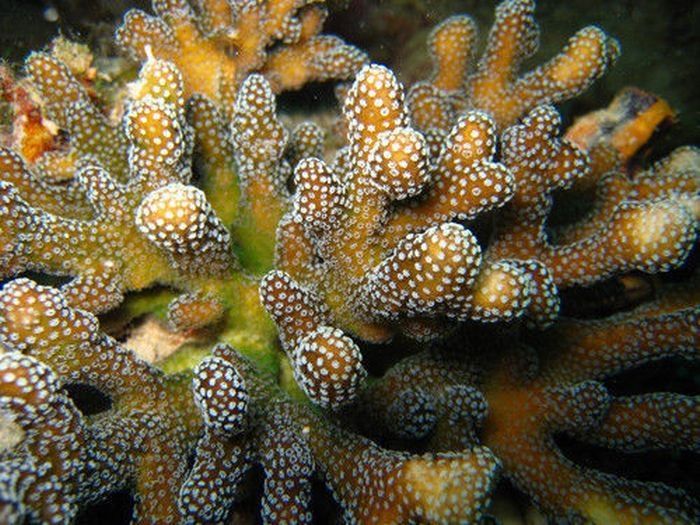|
|
Coral Organisms
|
Anatomy
While a coral head appears to be a single organism, it is actually a group of many individual, yet genetically identical, polyps. The polyps are multicellular organisms. Polyps are usually a few millimeters in diameter, and are formed by a layer of outer epithelium and inner jellylike tissue known as the mesoglea. They are radially symmetrical with tentacles surrounding a central mouth, the only opening to the stomach or coelenteron, through which food is ingested and waste expelled.
The stomach closes at the base of the polyp, where the epithelium produces an exoskeleton called the basal plate or calicle (L. small cup). The calicle is formed by a thickened calcareous ring (annular thickening) with six supporting radial ridges. These structures grow vertically and project into the base of the polyp. When a polyp is physically stressed, its tentacles contract into the calyx so that virtually no part is exposed above the skeletal platform. This protects the organism from predators and the elements.
|
|









